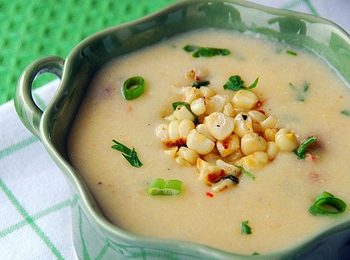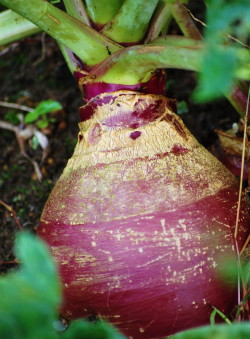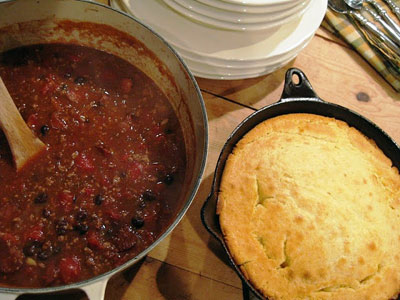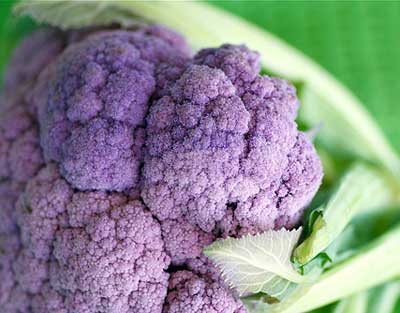 Maybe it's because I grew up in New England, home of New England Clam Chowdah. Or maybe it's because it was my mom's favorite soup. All I know is that every winter, as sure as the leaves fall from the trees, I crave a bowl of steaming hot corn chowder.
Maybe it's because I grew up in New England, home of New England Clam Chowdah. Or maybe it's because it was my mom's favorite soup. All I know is that every winter, as sure as the leaves fall from the trees, I crave a bowl of steaming hot corn chowder.
When I called my mom to tell her I wanted to make corn chowder and would like her recipe, she said, "Ooh, corn chowder! That's my favorite soup." I smiled.
"I'm sorry, honey, I don't have a recipe. But, it's chowder. Everyone knows how to make chowder." Or so every New England mother who makes chowder firmly believes.
So I conjured up images and smells of mom's corn chowder and started chopping and sauteing and pureeing. I added sausage for depth of flavor and cheddar cheese for richness. Then I adorned each serving with a simple corn relish that added just the right amount of texture to keep things interesting. The chowder turned out just like I wanted it to: it was wonderfully thick and creamy and had a deep corn flavor.
After I was finished, I called my mom and told her all about it. Her response: "Ooh, that sounds wonderful, honey! Can I have the recipe?"
So if you froze summer sweet corn, now is the time to whip it out. Of course, either frozen or canned corn from the supermarket works just as well.

 Me and my big ideas. Take rutabagas. I thought it would be just nifty to plant a row of these, late in the season, to use in our winter kitchen. (You can keep them right in the soil—how handy!) They’d be exclusively for us, not for the farm stand. Like the
Me and my big ideas. Take rutabagas. I thought it would be just nifty to plant a row of these, late in the season, to use in our winter kitchen. (You can keep them right in the soil—how handy!) They’d be exclusively for us, not for the farm stand. Like the  I love soups and stews. I truly do. This soup is a derivative of fresh, previously fresh, and local flavors that all meld together in a literal melting pot of culinary delight.
I love soups and stews. I truly do. This soup is a derivative of fresh, previously fresh, and local flavors that all meld together in a literal melting pot of culinary delight. A couple of years ago if someone told you that your blueberries were loaded with anthocyanins, you'd probably have dumped the bowl down the garbage disposal and called 911 to report being poisoned.
A couple of years ago if someone told you that your blueberries were loaded with anthocyanins, you'd probably have dumped the bowl down the garbage disposal and called 911 to report being poisoned.
